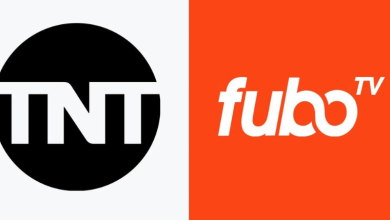Video on demand (VOD) has quickly evolved, providing viewers the option of subscribing to streaming video content as desired. Subscription video on demand is often referred to by the acronym SVOD.
SVOD as a market is likely to grow in the ensuing years as the industry, business, and society as a whole transition to a la carte subscription service options. Below, we provide a look at the market dynamics of SVOD.
Contents
SVOD is the Wave of the Future
SVOD is becoming more comprehensive as time progresses. Viewers in the United States, the rest of North America, Europe, Asia, and elsewhere can now choose between pay-as-you-go subscriptions, premium member subscriptions, and fixed model subscriptions. Though it is impossible to accurately predict the percentage increase in SVOD across the globe in the ensuing years, it is no secret that this business model is mutually beneficial to video streaming services, advertisers, and viewers.
Industry veterans highlight how the worldwide video-on-demand market is rapidly expanding with projections for continued growth through 2028 and possibly beyond. Part of the market growth is attributable to the increase in web-connected devices such as smartphones and tablets used to stream content.

The increasing ubiquity of 5G wireless technology facilitates content consumption at nearly every location outside of the home, meaning there is more reason for the SVOD market to continue to grow unless supplanted by another form of technology. At the moment, there is no such replacement technology on the horizon, meaning the coast is clear for SVOD to capture even more market share.
SVOD Growth is Unstoppable
Those who’ve crunched the SVOD numbers are quick to point out that the video-on-demand market is quickly becoming the dominant force over TVOD and AVOD. AVOD is short for advertisement-based video on demand. TVOD is short for transaction video on demand. SVOD has surpassed AVOD and TVOD, outgrowing both throughout previous years.
SVOD empowers users to pay for specific content they would like to watch. As a result, some of the top OTT forces such as Apple, Netflix, and Amazon have implemented the SVOD revenue model. These tech and entertainment powerhouses are taking full advantage of the SVOD revenue model to rake in even more viewers and dollars.
In total, the aggregate worldwide video-on-demand market amounts to a whopping $87 billion. The market’s compound annual growth rate (CAGR) is forecasted to be slightly under 20% during the period from 2024 to 2030. Market growth is partially attributable to the increase in the use of smartphones, web-connected tablets, and other gadgets used for video streaming.
SVOD will inevitably benefit from the ongoing increase in interest in new streaming content, be it movies, documentaries, series, and more.
A Healthy Market With a Bullish Future
According to Deloitte, more than 80% of survey respondents indicate they are spending more time indoors consuming online content (including SVOD content) than interacting with others including other forms of entertainment outside of the home. Though the survey responses are somewhat skewed by the pandemic, the overarching trend is away from interpersonal face-to-face interactions toward online interactions. The bottom line is the pandemic combined with improvements in technology has altered human behavior in potentially permanent ways.
Moreover, consumer spending on subscription content is increasing at a 21% clip per quarter. As is often said, content quality drives engagement and viewership. Combine the high-quality content of Subscription Video On Demand with the agency of subscription-based content along with the affordable cost of streaming and you have a potentially unstoppable force.
Though Generation X and the Baby Boomers are still partial to traditional TV shows, their discretionary income will dwindle in future years, paving a path for streaming-obsessed Millennials and Generation Z to drive market growth. Slightly more than 60% of these youngsters pay for a streaming video service. All in all, the average household in the United States has four streaming video subscriptions.
SVOD Challenges of Note
The future of SVOD (Subscription Video On Demand) is bright, yet there are a couple of potential stumbling blocks that must be mentioned in the spirit of honesty. For one, there is the potential for elevated churn as the number of streaming options continues to increase. A sluggish economy has the potential to steer more discretionary income toward the necessities of life.
SVOD also has a potential chink in its seemingly impenetrable armor in the form of show completion. If online content is removed from a streaming service or if a consumer is strictly interested in viewing one series, they might not stick with SVOD for the long haul.
However, there is also the potential for churn and return, especially among young adults and teenagers. Nearly half of those in the millennial age cohort and a third of Generation Z canceled SVOD only to resubscribe to the service at a later date.



